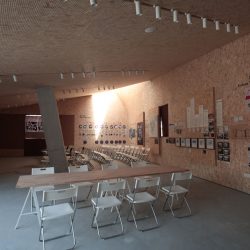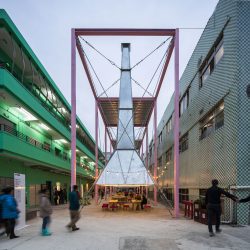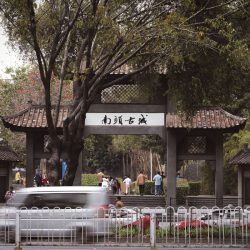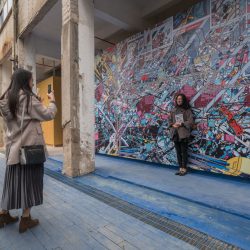THIS YEAR’S UABB PAYS A REVISIT TO THE ORIGIN OF SHENZHEN, AN URBAN VILLAGE. BUT WILL THIS BIENNALE BRING ABOUT GENTRIFICATION, AGAIN?
Amidst the leaping development occurring in an attempt to cope with China’s population growth that is about to increase even more over the coming decades, Shenzhen is probably an evident example of the way urbanization and the emergence of an efficient and comprehensive infrastructure can substantially elevate the quality of life of the people in a town or a city as well as the areas surrounding the development. And while more convenient and organized urban development appears to benefit everyone, one cannot help but feel somewhat concerned if not curious about the fact that the blooming progress could, at the same time, result in the disappearance of the local culture. Bi-City Biennale of Urbanism\Architecture (UABB) that took place in Shenzhen at the end of last year with ‘Cities, Grow in Difference’ or 城市共生 in Chinese (the direct translation is ‘City Co-existence’) being the theme and Liu Xiaodu and Meng Yan, two architects of UrBAnUS, along with Hou Hanru, the artistic director of roam’s MAXXI serving as its curators, took us back to revisit the urban development phenomenon in China and worldwide. Along this line, they tried to find the most fitting alternative for every sub unit (particularly those of Shenzhen), whether it be the new, emerging cities that are moving forward or the old urban spaces that are fighting to preserve their own identity and the future of a sustainable coexistence.
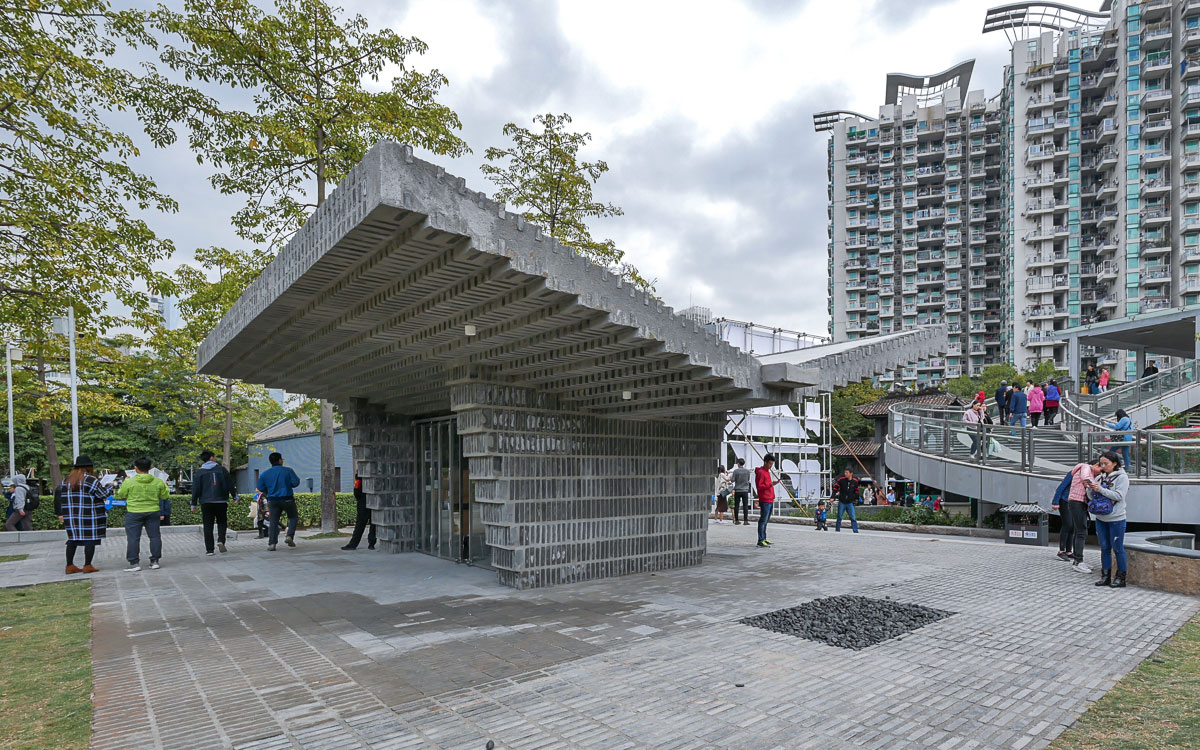
‘brick pavilion,’ an information center located at the entrance to the biennale designed by Chinese architect Yung Ho Chang
Throughout the past 12 years, UABB has acted as not only a biennale that vigorously engages with issues of urbanization and urbanism through a contemporary conversation that everyone is invited to follow and debate, for what’s more interesting is that one year after another, the venue where the event takes place has evolved into the spaces of greater cultural, social and economic dimensions. The first two biennales saw the transformation of warehouses and old buildings in the Overseas Chinese Town area into a creative spacethatwelcomedthearrivalofstylishretailshops, cafés, restaurants and art spaces all the way to design studios. The old warehouses in the Shekou industrial district, which were chosen as the venue for the last two biennales developed equally interesting new dimensions. But it seemed that the 7th UABB was curated toward a different direction. Instead of following the same approach of choosing the designated venue like its previous years, the 2017 show selected an over 1,000-year-old community in Shenzhen known as nantou Old Town to be the platform where new ideas were experimented with. The site posed a great challenge for both the curators and designers who were invited to join the biennale, which in a way, presented another solution to urbanism in terms of what UABB could leave behind for the area or community it was a part of.
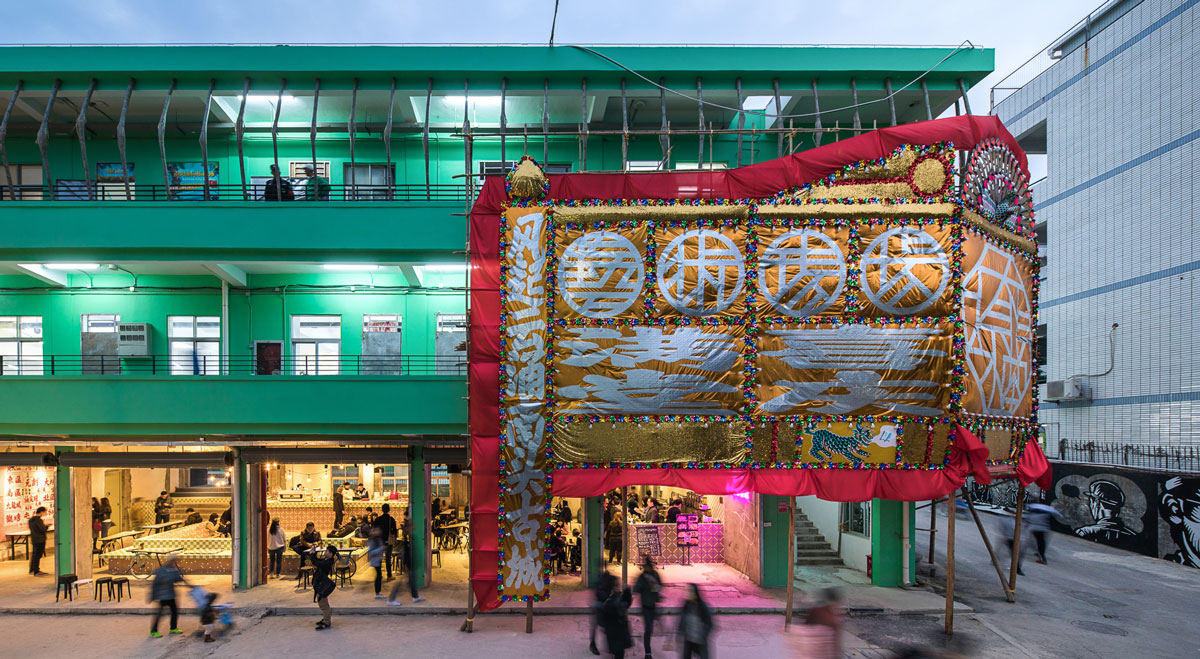
An installation conceived by a Beijing designer, Guan Yu and crafted by Choi Wing Kei, a floral plaque maker based in Hong Kong that hovers over the UABB cafe
- During the Biennale, the two pavilions designed by Urbanus will house an information center and a bookstore. Afterwards, the two will serve as community hubs for the Nantou residents
While urban intervention taking place in an active local community with actual community members can be considered a new experiment that we do not see often in a biennale, the question we should be concerned about is whether or not there will be yet another case of gentrification after UABB comes to an end. A lot of people question whether the area will be affected by the urban phenomenon and if the identity and originality of nantou Old Town will wither away, with the locals being forced to move due to the escalating living costs that hipness (in other words, creativity) brings to the neighborhood. We have all witnessed more than one manifest example of the mistakes brought about by the way creativity is imposed upon a physical space before turning it into a ‘creative community’ without any genuine connection with the locals. It is also interesting to see the godfather of a creative class like richard Florida, who once speculated that the creative crowd would be the force that propelled urban transformation, (which we can all accept to be true and certain aspects of such concept are actually practical) recently publishing ‘The New Urban Crisis: How Our Cities Are Increasing Inequality, Deepening Segregation, and Failing the Middle Class’ last year, a book that feels like a mea culpa; somewhat of Florida’s own self confession. And while the question being raised has never really been answered by any of UABB’s curators, what Liu Xiaodu said in a conversation was that ‘In the end, it’s inevitable that this type of space has to face gentrification. We cannot stop it from happening. The question is how can we slow down the process or make the gentrification affect the neighborhood and the people living in it the least amount possible. These are the things that we have to try to figure out.” The statement is a rather evident reflection of what UABB is doing, which is the result of an endeavor to work with both the space and the people. Such attempt made UABB not just another superficial biennale that thinks no further about the future impact it may bring. But then again, what we hear, see or experience is just the points of view of the people who organize this event and there are so many unheard voices of the community members that have not yet spoken out and been listened to.
Bi-City Biennale of Urbanism\Architecture 2017 will be held until the 17th of March 2018 at Nantou Old Town, Shenzhen across various different zones such as Global South, Urban Village and Art Making Cities, with other parallel activities taking place all over the city, waiting to be explored and experienced.
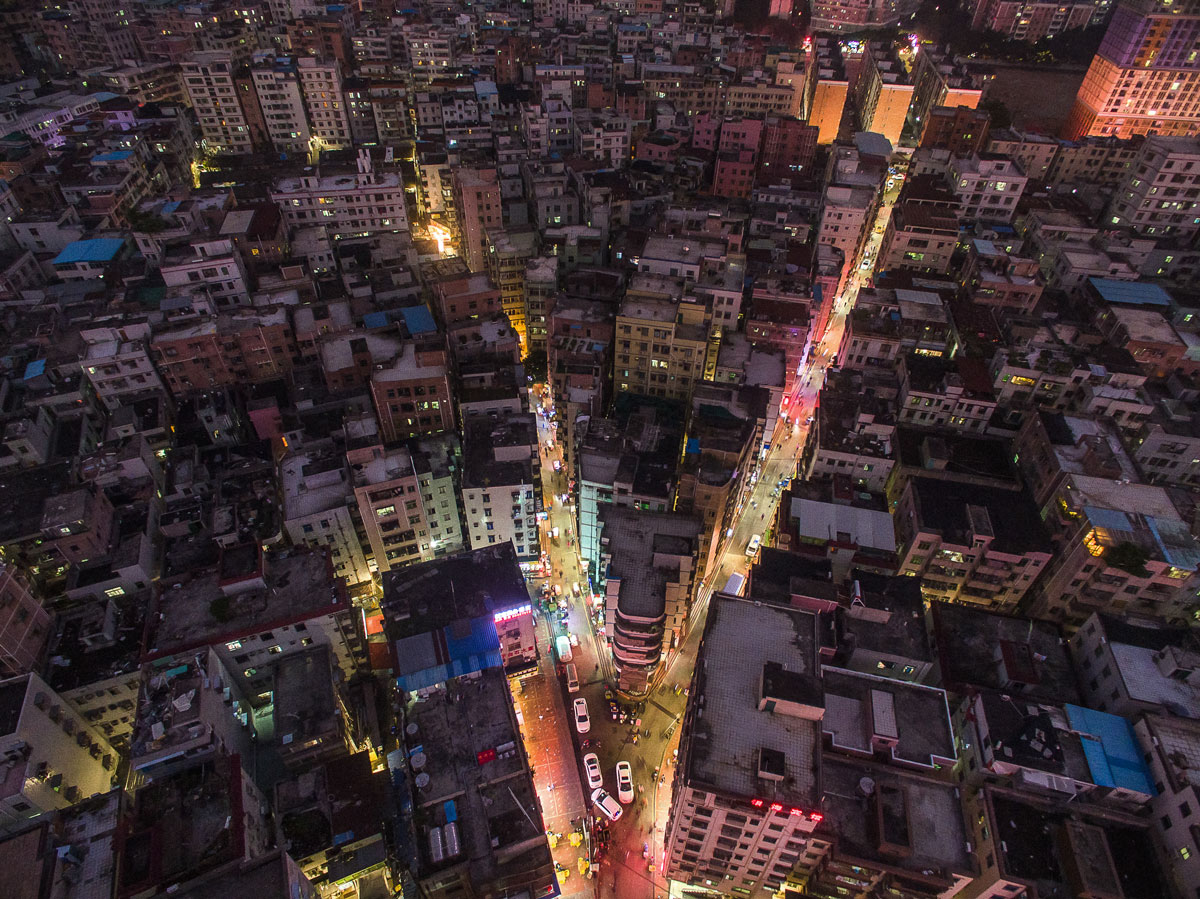
ท่ามกลางการพัฒนาอย่างก้าวกระโดดเพื่อให้โตทันรองรับกับจำนวนประชากรของประเทศจีนที่จะเพิ่มขึ้นอีกหลายเท่าตัวในไม่กี่สิบปีข้างหน้านี้ เสินเจิ้นน่าจะเป็นตัวอย่างที่ดีอันหนึ่งที่แสดงให้เราได้เห็นค่อนข้างชัดเจนเลยว่า การเปลี่ยนแปลงของเมืองและการเกิดขึ้นของโครงสร้างพื้นฐานที่มีประสิทธิภาพและครอบคลุม สามารถช่วยยกระดับคุณภาพชีวิตของผู้คนและพื้นที่ใกล้เคียงไปได้มากแค่ไหน และถึงแม้ว่าการเพิ่มขึ้นของความสะดวกสบายและความเป็นระบบระเบียบนั้นจะดูเป็นเรื่องที่ดีสำหรับทุกฝ่าย แต่ก็อดคิดไม่ได้เหมือนกันว่าการพัฒนาที่ว่านี้ก็มีส่วนทำให้วัฒนธรรมบางอย่างที่มีอยู่ดั้งเดิมของเมืองทยอยหายไปไม่น้อยในเวลาเดียวกัน น่าสนใจที่งาน Bi-City Biennale of Urbanism\Architecture (UABB) ที่เสินเจิ้น เมื่อปลายปีที่ผ่านมา ภายใต้ธีม “Cities, Grow in Difference” หรือในภาษาจีนคือ 城市共生 ที่แปลได้ว่า “City Co-existence” ซึ่งได้ Liu Xiaodu และ Meng Yan สองสถาปนิกจาก Urbanus รวมทั้ง Hou Hanru ผู้อำนวยการฝ่ายศิลปะของ MAXXI ที่โรม มารับหน้านี้เป็นคิวเรเตอร์นั้น ได้พาเรากลับมาย้อนสำรวจประเด็นเกี่ยวกับการพัฒนาเมืองของจีนและทั่วโลกกันใหม่อีกครั้ง พร้อมกับพยายามหาทางเลือกที่ลงตัวที่สุดเพื่อให้ทุกหน่วยย่อย (โดยเฉพาะอย่างยิ่งของเสินเจิ้น) ไม่ว่าจะเป็นเมืองใหม่ที่ต้องก้าวไปข้างหน้า หรือเมืองเก่าที่ต้องพยายามรักษาอัตลักษณ์ไว้ สามารถอยู่ร่วมกันต่อไปในอนาคตได้อย่างยั่งยืน
ตลอด 12 ปีที่ผ่านมา UABB ไม่ได้เป็นแค่ biennale ที่หยิบยกเอาประเด็นเกี่ยวกับความเป็นเมือง (urbanization) และวิถีชีวิตหรือคติแบบเมือง (urbanism) มาสร้างบทสนทนาให้เราได้ติดตามกันเท่านั้น แต่ที่น่าสนใจยิ่งกว่าคือการเกิดขึ้นของ UABB ในแต่ละครั้งมีส่วนช่วยทำให้พื้นที่จัดงานถูกเปลี่ยนให้กลายเป็นสเปซที่มีมิติมากยิ่งขึ้น ผลจากงานในสองครั้งแรกได้พลิกโฉมให้โกดังและกลุ่มอาคารเก่าในย่าน Oversea Chinese Town กลายเป็นสเปซของความคิดสร้างสรรค์ที่รวมเอาร้านค้า คาเฟ่ ร้านอาหาร พื้นที่จัดแสดงงานศิลปะ หรือแม้แต่สตูดิโอออกแบบมากมายมาไว้รวมกัน ในขณะที่โกดังเก่าของเขตอุตสาหกรรม Shekou ในสองครั้งล่าสุดที่ผ่านมานี้ก็ถูกเปลี่ยนให้มีมิติและน่าสนใจไม่ได้น้อยไปกว่ากัน อย่างไรก็ตาม ดูท่าว่า UABB ในครั้งที่ 7 จะมีทิศทางเปลี่ยนแปลงไปจากเดิมพอสมควร เพราะแทนที่จะใช้ approach ในการเลือกพื้นที่จัดงานในลักษณะที่คล้ายๆ กับในครั้งก่อนๆ ในคราวนี้การเลือกให้ชุมชนเก่าแก่อายุกว่า 1000 ปี ของเสินเจิ้นอย่าง Nantou Old Town มาเป็นเวทีทดลองไอเดีย ดูจะเป็นความท้าทายสำคัญให้กับทั้งตัวคิวเรเตอร์และนักออกแบบที่ถูกเชิญมาร่วมงาน ซึ่งเราคิดว่ามันก็ชวนให้เราได้มองเห็น solution อีกแบบเกี่ยวกับความเป็นเมืองที่ UABB จะสามารถส่งต่อไว้ให้กับพื้นที่นั้นๆ ต่อไปได้ดีทีเดียว
แม้ว่าการแทรกแซงเมือง (urban intervention) ที่ถูกลงไปในพื้นที่ชุมชนที่มีคนอาศัยอยู่จริงๆ ในครั้งนี้จะเป็นการทดลองใหม่ๆ ที่เราอาจจะไม่ค่อยได้เห็นกันใน biennale ไหนสักเท่าไร แต่คำถามที่หลายคนอดเป็นห่วงไม่ได้ก็คือว่า สุดท้ายแล้วพองานนี้จบลง พื้นที่เก่าแก่ตรงนี้จะโดนอิทธิพลของปรากฏการณ์ gentrification เข้าไปอีกรายจนทำให้กลิ่นอายและวิถีชีวิตดั้งเดิมนั้นหายไป พร้อมๆ กับที่ผู้อยู่อาศัยเดิมก็ต้องย้ายออกไปเพียงเพราะแบกรับความแพงที่มาพร้อมกับความเก๋ (หรือจะเรียกให้ถูกว่า “ความสร้างสรรค์”) ด้วยหรือเปล่า เพราะตัวอย่างของความผิดพลาดซึ่งเกิดจากการที่คนทำงานสร้างสรรค์ นำสิ่งที่เรียกว่าความคิดสร้างสรรค์เข้าไปใส่ในพื้นที่นั้นๆ และทำให้มันกลายเป็น “ชุมชนสร้างสรรค์” ขึ้นมาโดยขาดการมีส่วนร่วมกับผู้อาศัยเดิมจริงๆ ก็มีให้เราได้เห็นอยู่ไม่น้อย น่าสนใจที่แม้แต่เจ้าพ่อแนวคิด creative class อย่าง Richard Florida ซึ่งเคยคาดการณ์ไว้ว่ากลุ่มคนทำงานสร้างสรรค์จะมาเป็นส่วนช่วยขับเคลื่อนเมือง (ซึ่งก็ต้องยอมรับว่ามันมีส่วนที่จริงและ practical อยู่) ก็ยังเพิ่งจะตีพิมพ์หนังสือเล่มใหม่ออกมาในชื่อ The New Urban Crisis: How Our Cities Are Increasing Inequality, Deepening Segregation, and Failing the Middle Class เมื่อปีก่อน เหมือนกับเป็น mea culpa หรือ การสารภาพความผิดของตัวเอง และแม้ว่าคำถามที่ถูกยกขึ้นมานี้จะไม่มีคิวเรเตอร์ของ UABB คนใดที่สามารถให้คำตอบกับเราได้ตรงๆ แต่คำพูดหนึ่งที่ Liu Xiaodu กล่าวในระหว่างการเสวนาที่ว่า “ในท้ายที่สุดแล้วพื้นที่แบบนี้ก็ต้องเผชิญหน้ากับ gentrification เข้าสักวัน มันเป็นสิ่งที่เราเองก็ไม่มีทางหยุดได้ การจะทำอย่างไรถึงจะสามารถชะลอการมาถึงของมัน หรือทำให้ gentrification นั้นส่งผลกระทบต่อพื้นที่และผู้คนให้ได้น้อยที่สุดมากกว่า ที่เราจะต้องพยายามหาทางกัน” ก็ดูจะสะท้อนออกมาได้ชัดเจนว่าสิ่งที่ UABB ในปีนี้กำลังทำอยู่นั้นผ่านการศึกษาเพื่อหาหนทางทำงานกับพื้นที่และผู้คนไว้แล้วเป็นอย่างดี ไม่ได้เป็นแค่ biennale ที่ฉาบฉวยและขาดการไตร่ตรองผลกระทบล่วงหน้าไว้แล้ว แต่ก็นั่นล่ะ สิ่งที่เราได้ยิน ได้เห็น และได้สัมผัสก็เป็นเพียงมุมมองจากด้านของผู้จัดงานเพียงฝ่ายเดียว ยังเหลือเสียงของผู้คนในชุมชนนั้นจริงๆ อีกมากมาย ที่เรายังไม่ได้รับฟัง
Bi-City Biennale of Urbanism\Architecture 2017 จะยังคงจัดต่อเนื่องไปจนถึงวันที่ 17 มีนาคมนี้ที่ Nantou Old Town เสินเจิ้น และยังมีรายละเอียดเพิ่มเติมเกี่ยวกับโซนต่างๆ ของงานไม่ว่าจะเป็น Global South, Urban Village และ Art Making Cities หรือแม้แต่กิจกรรมคู่ขนานอื่นๆ อีกมากมายที่จัดขึ้นทั่วทั้งเสินเจิ้นที่ยังรอให้เราได้ไปสำรวจกันและค้นหากัน
TEXT : PAPHOP KERDSUP
PHOTO : ZHANG CHAO, COURTESY OF UABB 2017
szhkbiennale.org




